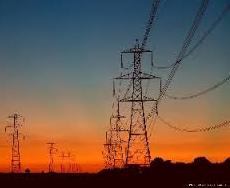 Bhubaneswar, Sep 21: The Odisha government’s decision to resort to power outages much before summer looks like a man-made crisis, given the government’s failure to launch power projects and unregulated drawing of water by industries causing scarcity in reservoirs.
Bhubaneswar, Sep 21: The Odisha government’s decision to resort to power outages much before summer looks like a man-made crisis, given the government’s failure to launch power projects and unregulated drawing of water by industries causing scarcity in reservoirs.
In Odisha, once a power surplus state, the state government, which claims to be a pioneer in electricity reforms, has resorted to power outages from the beginning of September, expressing its inability to supply uninterrupted power to consumers. The power cuts may continue till June 2016 due to decrease in water-level in reservoirs in the wake of a weak monsoon, said an energy official.
The state, which has attracted companies in the energy sector to set up industries due to its abundant natural resources, could not ground the projects, leading to power outage.
The Odisha government has signed MoUs with 29 independent power producers (IPPs) to set up thermal power plants having a total capacity of 37,440 Mw, of which the state share would be 6,141 Mw, an Energy Department report said. The approximate investment would be Rs.1,80,000 crore, it added. However, as many as 20 IPPs are yet to commence construction work.
The power companies like Tata Power, Visa Power, Sahara India Power Corporation, Visaka Thermal Power, NSL Nagapatanam Power and Infratech Pvt. Ltd., CESC Ltd. and SPI Ports are yet to commence construction on the projects, State Energy Minister Pranab Prakash Das told the assembly recently.
Of the 29 IPPs, only four power producers — GMR Kamalanga, Sterlite Energy, Jindal India Thermal Power Ltd. and Ind Barath Energy (Utkal) Ltd. — have commissioned their projects.
The situation of hydro power projects also remained the same, with only two companies — Orissa Power Consortium Ltd. and Meenakshi Power Ltd. — having started operation in three places while a total of 26 companies have signed MoUs with the Odisha government to establish 32 Small Hydro Electric Projects (SHEP) in the last 15 years, said an RTI report.
The hydro-power generation has come down to 450-600 Mw due to a fall in the water level in different reservoirs while the state used to generate 1,750 Mw from hydro-sector in peak hours and 1,000 MW in normal hours, P.K. Pradhan, commercial director of Gridco, the bulk power supplier of the state, told.
He said that total installed capacity of hydro-power in Odisha is 2,084 Mw. The IPPs and captive generating plants are injecting about 650 Mw to the state grid while it is getting 370 Mw from Ib Thermal Power Station, 310 Mw from Talcher Thermal Power Station and 900 Mw from the centre, said Pradhan.
Peak power demand stands at 3,500 Mw in Odisha due to power cut. Earlier, the peak hour demand was 4,111 Mw while average power demand was hovering around 3,500 Mw. However, activists accused the government of callousness to regulate the industries for drawing water illegally from various reservoirs.
“If there is water deficit in reservoirs, how is the government allowing the industries to draw water from the reservoirs? The government is allowing industries to draw water from Hirakud like reservoirs and deliberately hampering power generation,” Ranjan Panda, convener of Water Initiatives Odisha, told.
Last year, the Odisha government had issued show-cause notices to 21 major industries, including central public sector companies — Nalco and HAL — for defaulting in paying water cess since 2005-06. Several industries are drawing water from the Upper Kolab reservoir and Hirakud reservoirs without signing any agreement and paying water cess to Odisha Hydro Power Corporation (OHPC), adversely affecting power generation.
While over 4,000 villages are yet to be electrified, the Odisha Economic Survey 2014-15 revealed that the industry sector consumes a lion’s share of power. The consumption for irrigation and agriculture has declined from 2.06 percent in 2002-03 to 1.31 percent in 2014-15, said the report.
